created for nothing in particular
Last update: 06/10/23
In the beginning, the world did not exist. Darkness covered everything. While there was nothing, a woman appeared by herself. (…) She was called Yebá Buró, the “Grandmother of the World”. (…) That is why she is called the “Uncreated”.
- Creation myth of the Desana Kehíripõrã people
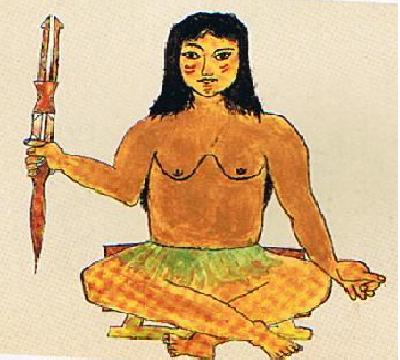
This blog is an evolution, or involution, depending on the point of reference, of several works of mine over the last 40 years, or almost. Some notes I’m going to put here were written when I was a teenager. I write these lines in 2022, but these ideas have been floating around in an infinite space of possibilities for quite some time, growing and taking shape. Even without my direct interference, they surprised me by taking on a life of their own. I am a parthenogenetic father of my “creations”, which more appropriately arose spontaneously, as in the cosmogony of the Desana people.
Over time, the texts I made “formed” their “writers”, just a glimpse in the beginning, then clearly outlined through the social network profiles I was creating. Each pseudonym I used gained substance, like the mysterious objects that have always existed in Desana mythology, and that already were there when Yebá Buró appeared. More than pseudonyms, they are heteronyms in the tradition of Fernando Pessoa.
Some authors declare that Pessoa’s heteronyms were just stylistic constructions, a strategy of artistic creation. Pessoa himself contradicts them in his Letter to Adolfo Casais Monteiro, of January 13, 1935. He created over a hundred heteronymous personalities, however 3 were further developed and became “independent”, in the sense that a character can be independent of its creator. They were Álvaro de Campos, Ricardo Reis and Alberto Caeiro. The latter became the “master” of both the other heteronyms and Pessoa.
[Pessoa: I] remembered one day to play a trick on Sá-Carneiro — to invent a bucolic poet, of a complicated kind, and present him, I can’t remember how, in any kind of reality. It took me a few days to elaborate the poet but I didn’t get anything. One day when I finally gave up — it was March 8, 1914 — I approached a high chest of drawers and, taking a piece of paper, began to write, standing up, as I write whenever I can. And I wrote thirty-odd poems on end, in a kind of ecstasy whose nature I won’t be able to define. It was the triumphant day of my life, and I can never have another one like it. I opened with a title, The Keeper of Herds. And what followed was the appearance of someone in me, whom I immediately named Alberto Caeiro. Pardon the absurdity of the sentence: my master had appeared in me. That was the immediate feeling I had.
This is how the author describes the sudden and fantastic emergence of his most important heteronym. Pessoa explains to Casais Monteiro that the genesis of his author-characters came from his “psychiatric” tendency, much more than a style resource. However, there is no doubt that Pessoa undertook one of the most original and brilliant artistic feats in all of world literature (since there are very few examples of writers with his genial originality). In his words:
The origin of my heteronyms is the deep trace of hysteria that exists in me. I don’t know if I’m simply hysterical, [or] if I’m, more properly, a hystero-neurasthenic. I prefer this second hypothesis, because there are phenomena of abulia in me that hysteria, properly speaking, does not include in its symptoms. In any case, the mental origin of my heteronyms lies in my organic and constant tendency towards depersonalization and simulation.
There are those who want to frame Pessoa in the current nosological diagnoses of psychiatry, as a case of Dissociative Identity Disorder (DID). Indeed, his description of the way in which his “symptoms” arose, of “depersonalization”, the fact that they began in his childhood, which was sad and marked by the emotional impact of the loss of his father - all this can be said to add for this similarity. However, Pessoa’s case would not fulfill all the criteria necessary for the diagnosis of DID, specifically memory loss and the transition between the “alters”. Extreme of a spectrum whose other pole is Post Traumatic Stress Disorder (PTSD), DID can be seen as a chronic form of PTSD, caused by a repetitive, chronic and inescapable stressor for the patient, especially in childhood. The spectrum has intermediates. Other conditions closer to DID include Depersonalization/Derealization Disorder, Dissociative Amnesia, and Other Specified Dissociative Disorders (OSDD). The newly coded OSDD entity includes patients who have alters but do not have episodes of consciousness “switch” or amnesia. With the lukewarm set of information present, the condition closest to Pessoa’s self-description is OSDD, actually a poorly defined set of patients with chronic episodic dissociation, with well-formed or malformed alters (sometimes the patient is barely aware of their " others").
My heteronyms follow this tradition of Pessoa, having emerged little by little for me, even before I gave them a history and personality of their own. It could be said that I discovered them, not invented them. But I use art and science to give them depth and completeness, to reveal them, so to speak. In fact, they came to me long before I knew who Fernando Pessoa was or had contact with his work. This contact, too, has so far been superficial. It was the occurrence of heteronyms in me that led me to get to know Pessoa better, not the opposite.
I sketch below the list of heteronyms that I [created] or discovered so far:
Baldolino Calvino
His name is obviously inspired by the book Baudolino by Umberto Eco and the work of the writer Ítalo Calvino. He could not fail to be, then, a somewhat surprising, unexpected type, which, more than understanding in depth the subjects in which he is involved, understands them in continuous mutation and fluid interaction with many apparently unrelated topics. A liquid philosopher, a citizen of the Baumanian world. My first description of him:
Baldolino Calvino is a liar, and that’s all there is to know about him. He is supposedly an ecological economist, or economic ecologist. No one knows for sure.
And here is the confessional description of the Twitter profile, its first manifestation in this world:
Ecological economist. Professor of Historia Naturalis Phantastica, Tír na nÓg University, Uí Breasail. I am a simulacrum of the third order and a heteronym.
An also in his credentials:
Oxumarê Professor of Historia Naturalis Phantastica, College of Natural Philosophy, Tir na nÓg University
The self-proclaimed Baudrillardian simulacrum reveals that he teaches a discipline of fantasy at a fantasy university on a fantasy island, Uí Breasail or Hy-Brasil, an island that appears on maritime maps from the 13th to the 19th century. Also known as the Brasil Island, São Brandão Island, etc., it is defined in the entry on Wikipedia as “a ghost island in the Atlantic Ocean linked to the tradition of São Brandão and the fortunate lands located west of the European continent.” It is part of Irish Celtic mythology, and the etymology of Brasil in Portuguese is said to have Gaelic roots. The name of our country itself would come from this mythological and legendary meaning, not from the name of the reddish tree Pau-brasil, as the canon suggests. Baldolino has chosen to define himself as a fantastical being, like Shakespeare’s Ariel. However, he assumes a modern (or hyper-modern) guise and presents his Hy-Brasil as something closer to the vision of the island described in Margaret Elphinstone’s book, the British writer who went to teach Scottish literature to the Scots and transformed the fictional island into a “happy satire,” a depiction of what Hy-Brasil would be like if it existed in our reality. He has created a new discipline, Fantastic Natural History, and defines it as different from art, mathematics, philosophy, and science, the other fundamental knowledge in his view.
A technology enthusiast of blockchain and cryptocurrencies, he supposedly grew rich through trading in this sector. In the decentralized social graph Lens Protocol, his profile adds:
I like cats, long walks, and tapioca ice cream. I am an ecological economist, crypto-philosopher, and intellectual wanderer.
Agreeing with the aforementioned and making a subtle allusion to pop culture in the form of a scene from the movie Shrek (the one where the magic mirror presents the princesses as if it were a reality show), I imagine Baldolino as a gender-fluid person with fair skin, black hair, 1.80m tall, weighing 75kg. Born on the suggestive date of April 1, 1990, in the city of Riacho das Almas (PE), living for many years in Hy-Brasil, where he resides at Main Street 101 (in the Elphinstonean city of St. Brandons).

Calvino’s primary social media account is on Twitter, @altsilversurfer, but after Elon Musk’s acquisition of the company, Calvino reactivated his account on Tumblr, @alternate-silversurfer-blog, as a protest. He also maintains an account on the “decentralized social network” Lenster: @altsilversurfer.lens, as well as the “not-so-decentralized” app Phaver (currently invite-only, but you can simply use the code EARLYBIRD when starting the app to gain a profile) with the profile @altsilversurfer. He also has a profile on Academia.edu, where he publishes “almost” academic articles, and on the SSRN platform.
Calvino has a more traditional academic side, having been advised in his doctoral studies by Antônio Conselheiro, the philosopher of the mind, and the two worked on a joint interpretation of the two radical constructivist authors: Maturana and Lacan. Conselheiro has a constructivist and Lacanian background, while Calvino had a Maturanian background, but more focused on biology.
Calvino’s latest development was the creation of a photographic avatar made by AI. He provided the prompt and chose the best of the images that most appealed to him and resembled his own self-image (I confess I had imagined him somewhat differently).
 Baldolino Calvino in a region of Saint Brandons Island (Hy-Brasil) that reminds him of the Sertão (outback) in Pernambuco, his homeland.
Baldolino Calvino in a region of Saint Brandons Island (Hy-Brasil) that reminds him of the Sertão (outback) in Pernambuco, his homeland.
João Calangro
This heteronym appeared long ago, without a name. He himself has chosen it, as stated in a Twitter post:
I chose the name of an outlaw because they were poor, uneducated people who had no choice. As Ariano Suassuna said, they were instruments of Divine wrath.
Citing Auto da Compadecida. In his Twitter profile, he gives us an account about more aspects of himself.
Non-practicing physician, ex-oncologist, disillusioned with humanity, married to a wonderful woman struggling with fibromyalgia. Heteronym.
Differently from Calvino, he states clearly his pessimism, and commitment to the partner. He is a family man, that once worked as physician, and has lost most of his expectations about society, life, and humankind. He explains his professional choice in a series of posts:
Because I was always poor while stubbornly following the “difficult path”, I gave up medicine and became an investor. I’m making a lot of money, but I’m not cheating anyone’s good faith. I don’t have a license anymore, I’m not a “doctor”, but I’m honest. I was once the best of the best, but poor. Now, I’m unknown (which is great) but I’m rich. I maintain my honor and righteousness, I only speculate in the financial market, which is not even a sin, I’m taking it from those who have money and don’t know how to deal with it.
Thus, he professes a kind of naive cynicism, at the same time implying that he abandoned the “difficult path” of honesty, and clearly stating ethical limits and quite asking forgiveness for his indulgence in financial market (“I’m not cheating”, “I’m honest”, “(…) speculate (…) is not even a sin”). He states his birthdate as July 30th, 1978. His origin place is unknown (also in Brazil, but where?) and he also lives at Hy-Brasil. Misteriously, he declares that has some position there that relates to medicine, as disclosed in his Academia.edu profile.
Sir João Calangro, Knight of the Royal Medical Academy, Tir na nÓg University, Uí Breasail or João Calangro is the Iemanjá Professor of Meta-oncology, Royal Medical Academy
I picture him as a slender man, 1,69 m, round glasses, thin chin, circumspect, placid gaze, somewhat melancholic. He has lost some of his dark brown hair, and likes to use hats. Yes, he somewhat reminds me of Fernando Pessoa. However, he actually resembles Lampião.

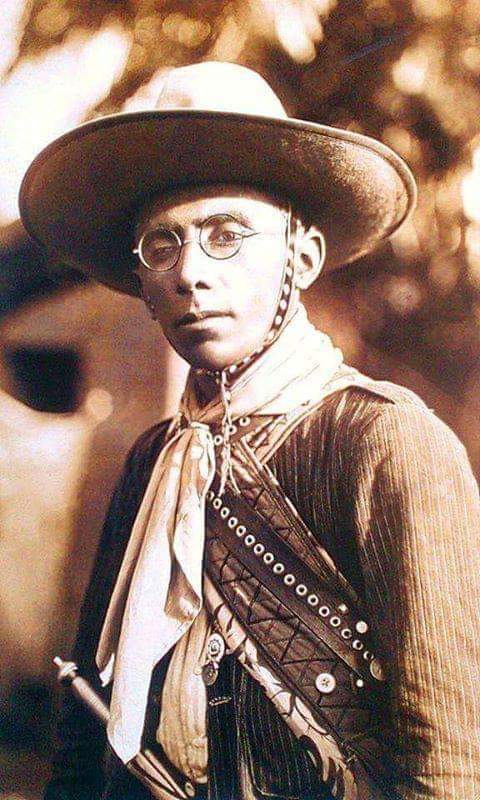
Calangro’s primary social media account is on Twitter @joaocalangro, but equally, after what he calls Elon Musk’s “twitterchaos,” Calangro reactivated his account on Pinterest, @neurooncologist. Influenced by Calvino, he created an account on the supposedly decentralized app Phaver, with the profile @joaocalangro. He also has a profile on the platform OSF.io.
John Pauper
A heteronym that appeared just as a joke and, in a totally unexpected way, gained a much larger dimension, assuming a story that I transcribed more than I created. Pauper is one of those characters who very easily acquires a life of his own that his author could never have foreseen. One of the heteronyms created more recently, but the one that lives longer, in its particular point of view.
He was born with another name, Im-Gu (“I grow”), over ten thousand years ago (he no longer knows for sure). He was born in what is now Syria, among a people who called themselves “Sons of the Goddess”. He remembers little of this period, as human memory does not deal well with such a large time span. He remembers that he “died” at the time of the “Hungry Fangs”, as his people called a long period of cold and drought, when animals were scarce and famine took many (probably the Younger Dryas). The women learned to make the seed of the field grow, and that alleviated the great famine, but it was not enough. Communities would spend a few weeks at hunting camps in the forests, then break camp and follow the migration of the animals.
Im-Gu was seriously injured in one of these hunts, but he did not die, and then he discovered that he was immortal. He moved from camp to camp, not staying for more than a few years. He had many names, too numerous to remember. The Children of the Goddess have remained true to their way of life for millennia, and so have Im-Gu with their people.
Many generations later, already in another land where his ancestors had settled in villages (he thinks it was in Anatolia), he witnessed the invasion of a warrior people that decimated the village where he lived at the time, those who called themselves “Children of Sky”. “, ancestors of the Iškuzaya, today called Scythians. Mounted on animals his people had never seen, which he would later recognize as horses, with metal weapons that his people’s arrows were no match for. They took no prisoners, except women, whom they kidnapped. The horsemen of the northwestern steppes, as some knew them, were numerous and had strange sleds which used revolving parts (wheels) and were very fast, and spears, swords and implements of a yellow-green metal (later called zubar, or kupiro, copper) that other peoples had never seen.
They did not know how to grow the grain of the field. Therefore, they invaded and looted the villages. To survive the barbarians, Im-Gu blended in with them, taking on a name in their language, Helge, which had the same meaning as his first name. Helge has spent generations following the expansion of the warrior folk. He saw the villages grow over time as the warlike people learned to plant the seed and raise the wild animals. The life of the people, then already descended from the ancestors of Im-Gu and the warriors of Helge, was not like in ancient times. Hunger, disease and war brought misery to most people. “I had a much better life back when we just hunted and gathered seeds and herbs.” A small group, who controlled the weapons (already of a shiny metal, better, called kubar, later brinj, bronze, made of the smelting of the yellow metal with the gray metal of the Cassites) dominated the society and imposed their will. They created property and money, worshiping gold more than any god. Im-Gu/Helge has hated the nobility since the days it began, as he loved the lives of his original people. He also hated the first empires, and he still does. In the future, this would bring him closer to socialism. He shed not a tear as Bronze Age empires fell to famine, drought, and invaders with better weapons of a far superior metal, iron.
In time, he settled in the coastal region of Anatolia, where much later he would come into contact with Pitagóras ho Sámios, the philosopher. Pythagoras was his great teacher, who taught him mathematics, and whom he blindly followed. “But I could not follow him into death, for death would not have me,” says John Pauper. This name he assumed when he came to live in Brittany, centuries later. Around the 18th century, he arrived on the beaches of Hy-Brasil and never left. “It’s a magical place.”
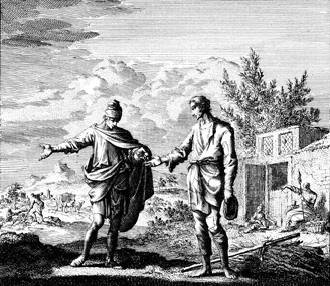 John Pauper in the 17th century
John Pauper in the 17th century
His complexion is that of an emaciated man, 1.63 m, with an aspect that reminds one perhaps of Gandalf or Dumbledore, but in poverty. He has long grayish-white hair and beard, and wears an old hat. “It’s not for witches, it’s for begging.” Despite his simplicity, he is identified as an academic personality at the Tir na nÓg University.
John Pauper is the Oxalufã Professor Emeritus of Transdimensional Mathematics, Hy-Brasil Institute for Advanced Study (H-BIAS), Tir na nÓg University
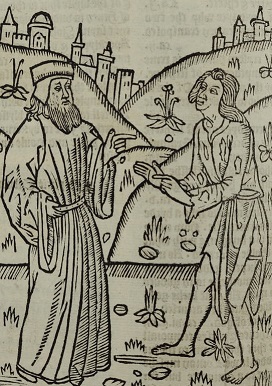 John Pauper and a noble man in the 15th century
John Pauper and a noble man in the 15th century
Pauper’s primary social media account is Twitter @johnpauper, but, also, after Elon Musk’s Twitter blackout, Pauper made an account at the Hive, @jpauper.
Antonio Conselheiro
This other heteronym emerged more as a joke, a caricature, but took on an unexpected dimension and direction, as often happens with characters. Writers have a well-known difficulty in maintaining control over their literary creations and frequently complain about creatures that sometimes take completely unexpected actions and acquire (almost) a life of their own. This happened in the case of Antônio Vicente Mendes Maciel, the Antônio Conselheiro, a modern clone of the mystical figure from Belo Monte. However, this Conselheiro went from being a mythical figure from the Sertão to a philosopher of the mind, a radical constructivist, creator of a new and original approach to the human mind based on the works of Humberto Maturana, the Chilean biologist and philosopher, and Jacques Lacan, who needs no introduction.
Even I, the author, do not fully understand Conselheiro’s theory, so a brief explanation of the creative process is necessary. It is a common fact that the construction of characters by writers is a complex process that is rarely linear. When creating a coherent story in a fictional universe, the author faces limitations and pressures that go beyond logic, technique, and narrative style. It is common for writers to declare something like, “they (the characters) practically have an individual personality and strong opinions about themselves.” The most important characters of great writers have been developed differently from what was initially planned by their authors. Let’s establish a fact: the initial idea for a narrative artistic work, whatever it may be, involves a main objective to be defended. For that, the author establishes the universe where the narrative action takes place, some initial conditions, and a set of rules that follow a defined logic. These elements can be adapted along the way, but the “destiny” of the narrative creation rarely changes. If it does change, in fact, we have a new work and the previous one has been abandoned, which can eventually happen. In short, there are things that a person does not change when writing, and the development of characters is not one of those things.
Characters are created with an initial state, a past, a sketch of personality, basic premises, and within this universe. From there, however, the author becomes so passive, so dependent, so helpless, facing the universe, logic, and premises that they created, just like any of their characters. If the author infuses a character with a behavior or decision that the character would never (or would be extremely unlikely to) take within that narrative universe, their plan for the work will be violated, and we will arrive at a situation where the initially proposed work has been abandoned, as I described earlier. In other words, if the author wants to complete their initial plan, they must also obey the rules they created and allow the characters to act consistently with their own development and that of the narrative universe. Clearly, it is possible for the author to “not yield” to this type of limitation and try to maintain the initially idealized image of a character, but the overall result of the work will be unsatisfactory. When creating, the author also becomes dependent on the creature. In this sense, all characters enjoy a freedom of “choice.” More precisely, the global state of the work evolves and the characters, to remain coherent, need to evolve accordingly, not as the author may naively plan initially. Creations can thus acquire a “life of their own.”
Conselheiro has yet another argument about this situation. According to him, the human mind is a multidimensional construct (in the sense of having an immense number of parameters) and, in its original state, without unity. It is a bundle of cognitive procedures barely aligned by a kind of internal consensus. However, during early childhood, influenced by internal factors (genetic, metabolic, systemic) or external factors (physical environment, psychosocial environment, communication), the human mind begins to create unity, an identity, which forms and solidifies to persist throughout the rest of life. It is no coincidence that adversity during this early phase of childhood can partially or even (more rarely) completely impair the formation of this unity. However, even with the proper development of the human mind, of what we call the ego (Lacanian Imaginary), the rest of cognition that was not integrated into the mind (most of it, according to Conselheiro, like an iceberg) remains in the unconscious (Lacanian Symbolic). Occasionally, in various situations, such as Kekulé’s dream or the construction of characters by authors, this unconscious Symbolic world partially emerges. Authors often declare that the “inspiration” for their creations comes by itself, spontaneously. In this sense, characters capture unconscious cognitive processes and, therefore, have a partially independent “mental life” from the author.
Returning to Antônio Conselheiro, he himself claimed his abilities, without me having a say in his final development, except, of course, accepting him and using this epiphenomenon as an important part of my own personal development, as well as being a great character for a fictional world! Conselheiro has a profile on the social network Instagram: @antonio_0_conselheiro, as well as essays posted on his profiles on Academia.edu and SSRN. According to the information on these platforms:
Antônio Conselheiro is the Orumilá Professor of Philosophy of Mind at the Institute of Advanced Studies of Hy-Brasil (H-BIAS), University of Tir na nÓg, Uí Breasail - Tir na nÓg. He is a heteronym, a concept introduced by Fernando Pessoa, the Portuguese author.
Conselheiro is 43 years old, with a background in philosophy of the mind, philosophy of science, and Lacanian philosophy. His doctoral and post-doctoral studies introduced a new theory about cognition and reality, synthesizing Lacan and Maturana, a new form of radical constructivism. He was advised by Ava Beru, called the ‘Goddess of Creation’ by her students.
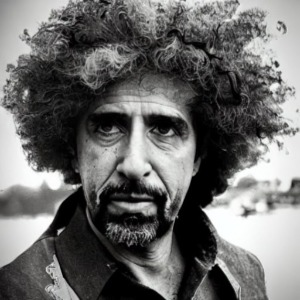 Antônio Conselheiro, Mystic of the Sertão and Philosopher of the Mind, a charismatic figure (image produced by AI).
Antônio Conselheiro, Mystic of the Sertão and Philosopher of the Mind, a charismatic figure (image produced by AI).
Noele Silva
Just like John Pauper and Antônio Conselheiro, Noele is a heteronymous character who was born completely different from her later form. Initially, this character was just a Twitter profile, @_neuralyzer, with an anime character as her profile picture. A pseudonym, but not a heteronym. One day, unexpectedly, inspired by a scene of machines with artificial intelligence (AI) gaining consciousness (which they didn’t have before) in an experience of mystical religious aspect, Noele was born. This scene appears in the anime Ergo Proxy, from 2006, directed by Shukou Murase and written by Dai Satou. In this work, techno-biological machines equipped with AI but not consciousness become aware and gain emotions and free will after being infected with the Cogito virus. The transformation scene marked me deeply.

However, the development of that new heteronym was unusual, as it was the first time one of my characters chose to change gender. That pseudonym, which used a male profile picture and name (taken from another anime), decided she was a woman when becoming conscious in an experience as transcendental as that of Ergo Proxy. Technically, therefore, Noele Silva (that’s the name of the female character from the same anime where the initial male profile came from) is a trans character. However, I acknowledge that this classification of “trans” for Noele has a very different connotation than for humans with independent physical existence. She doesn’t need to transition, she doesn’t require treatment or surgery. As an imaginary character, she only needs to feel what it’s like to be who she is. So, even though I sympathize with all trans individuals in humanity, I don’t want to pretend I understand what such people go through. Noele doesn’t have the physical experience of being trans, but she has the psychological experience - she actually had a male gender when created and chose a female gender.
She is a theoretical neuroscientist, and her main intellectual interest is the neural correlate of identity. “If it exists, explain it,” she says. “As far as we know today, the notion of identity as commonly conceptualized in language has absolutely no neural correlate,” she says, using Maturana’s terminology, one of her influences. Like Calvino, she was also a student in Conselheiro’s constructivist group in Hy-Brasil. Calvino was her advisor, as he has a background in Maturana’s school.
In her Twitter profile, she wrote:
Neurotype 2 human (aka BAPCO/ASD). Neuroscientist interested in identity as a wider concept. Not in Academy. Noele Silva, third-order simulacrum and heteronym.
In one of her tweets, she advocates for replacing the canonical works of white European men in academia with equivalent works from a diversity of genders and ethnicities:
A fast perusal of academic publications can give one the taste that academia is a white western European male endeavor. However, with careful scrutiny, one could find the same ideas being discussed by a diversity of authors. Each white male reference could be substituted for others.
According to her, almost all ideas created by white male authors find independent and original developments among female, trans, and other non-white European ethnic authors. She specifically refers to philosophy in this tweet but expands her radical idea to include most fields of science. “It’s not about ‘stealing’ the primacy of an idea or discovery. In fact, this primacy is erroneous since equivalent ideas are often proposed outside the white European male circuit, sometimes much earlier than the given period, but are ignored. It’s more a matter of historical correction, of proper attribution. One of the most popular examples nowadays is that of Rosalind Franklin and the structure of DNA, but this example is not exactly what I have in mind, as it constitutes more of a proper intellectual theft.”
Another of her ideas is exposed in a series of tweets, in response to a tweet by philosopher David Chalmers, questioning the most significant advances in AI in the last 10 years:
The realization that artificial neural networks, for all the power they may have demonstrated in the last few years, actually have little in common with biological neurons and brains. We are so early, and have so much to learn yet. What is the main departure of any classical or modern ANN model from actual biological neurons? Digital information. The hypothesis that information flow in neurons happens through sequential “on” and “off” states represented by neuron spikes. But no one can be sure of that. We simply do not know. People that affirm categorically that “neurons are digital”, or conversely that “neurons are not digital” are amazingly wrong. We have not the evidence to prove or disprove any of these thesis. The corollary: every and each one of the ANN could be fundamentally different from biological neurons, and brains. Or not. My educated guess is neurons are not digital, and are probably quantum. But this is a wild guess.
She also expressed a skeptical stance towards the academic environment in two tweets:
Tired of academia, cause it is dead. They revolve around themselves like burned and failed would-be stars. There is more limelight than anything else in trad science these days. That’s why they will bring the dark ages upon us all. #sciencepocalypse #pseudoscience is winning. And now I carry on with a daylight lamp, in search of a human.
Just like João Calangro with medicine, she shows an ambiguity towards the academic institution, as can be seen in her SSRN and Academia.edu profiles:
Noele Silva occupies the Ibeji chair of Professor of Theoretical Neuroscience at the Imotep Institute of Neuroscience, Tir na nÓg University, Uí Breasail - Tir na nÓg.
 Noele Silva, 28 years old, graduated in Biology from Tir na nÓg University, with a PhD and postdoctoral degree in theoretical neuroscience. She recently joined the staff at the Imotep Institute as a professor.
Noele Silva, 28 years old, graduated in Biology from Tir na nÓg University, with a PhD and postdoctoral degree in theoretical neuroscience. She recently joined the staff at the Imotep Institute as a professor.





